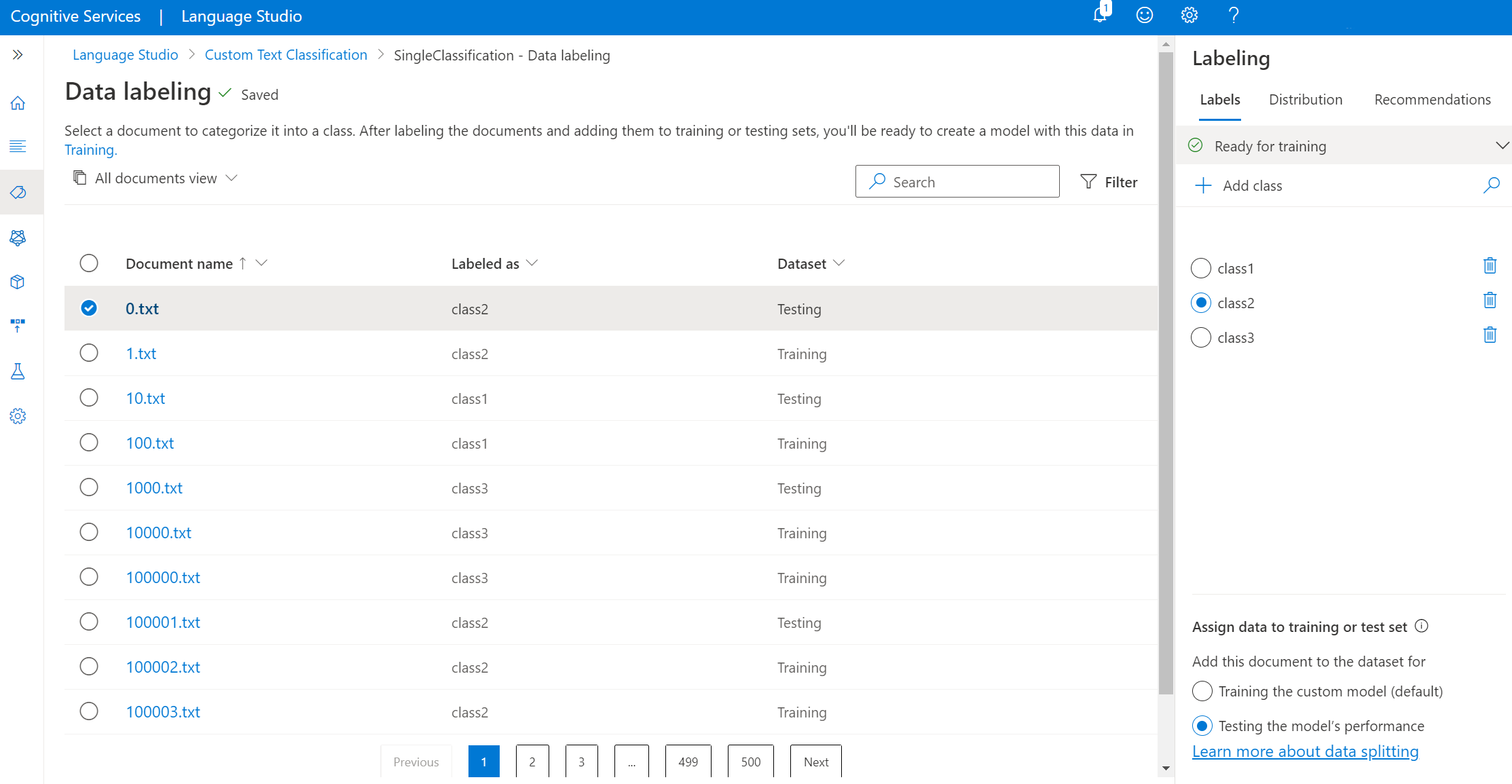Label text data for training your model
Before training your model you need to label your documents with the classes you want to categorize them into. Data labeling is a crucial step in development lifecycle; in this step you can create the classes you want to categorize your data into and label your documents with these classes. This data will be used in the next step when training your model so that your model can learn from the labeled data. If you already have labeled data, you can directly import it into your project but you need to make sure that your data follows the accepted data format.
Before creating a custom text classification model, you need to have labeled data first. If your data isn't labeled already, you can label it in the Language Studio. Labeled data informs the model how to interpret text, and is used for training and evaluation.
Prerequisites
Before you can label data, you need:
- A successfully created project with a configured Azure blob storage account,
- Documents containing text data that have been uploaded to your storage account.
See the project development lifecycle for more information.
Data labeling guidelines
After preparing your data, designing your schema and creating your project, you will need to label your data. Labeling your data is important so your model knows which documents will be associated with the classes you need. When you label your data in Language Studio (or import labeled data), these labels will be stored in the JSON file in your storage container that you've connected to this project.
As you label your data, keep in mind:
In general, more labeled data leads to better results, provided the data is labeled accurately.
There is no fixed number of labels that can guarantee your model will perform the best. Model performance on possible ambiguity in your schema, and the quality of your labeled data. Nevertheless, we recommend 50 labeled documents per class.
Label your data
Use the following steps to label your data:
Go to your project page in Language Studio.
From the left side menu, select Data labeling. You can find a list of all documents in your storage container. See the image below.
Tip
You can use the filters in top menu to view the unlabeled files so that you can start labeling them. You can also use the filters to view the documents that are labeled with a specific class.
Change to a single file view from the left side in the top menu or select a specific file to start labeling. You can find a list of all
.txtfiles available in your projects to the left. You can use the Back and Next button from the bottom of the page to navigate through your documents.Note
If you enabled multiple languages for your project, you will find a Language dropdown in the top menu, which lets you select the language of each document.
In the right side pane, Add class to your project so you can start labeling your data with them.
Start labeling your files.
Multi label classification: your file can be labeled with multiple classes, you can do so by selecting all applicable check boxes next to the classes you want to label this document with.
You can also use the auto labeling feature to ensure complete labeling.
In the right side pane under the Labels pivot you can find all the classes in your project and the count of labeled instances per each.
In the bottom section of the right side pane you can add the current file you are viewing to the training set or the testing set. By default all the documents are added to your training set. Learn more about training and testing sets and how they are used for model training and evaluation.
Tip
If you are planning on using Automatic data spliting use the default option of assigning all the documents into your training set.
Under the Distribution pivot you can view the distribution across training and testing sets. You have two options for viewing:
- Total instances where you can view count of all labeled instances of a specific class.
- documents with at least one label where each document is counted if it contains at least one labeled instance of this class.
While you're labeling, your changes will be synced periodically, if they have not been saved yet you will find a warning at the top of your page. If you want to save manually, select Save labels button at the bottom of the page.
Remove labels
If you want to remove a label, uncheck the button next to the class.
Delete or classes
To delete a class, select the delete icon next to the class you want to remove. Deleting a class will remove all its labeled instances from your dataset.
Next steps
After you've labeled your data, you can begin training a model that will learn based on your data.

